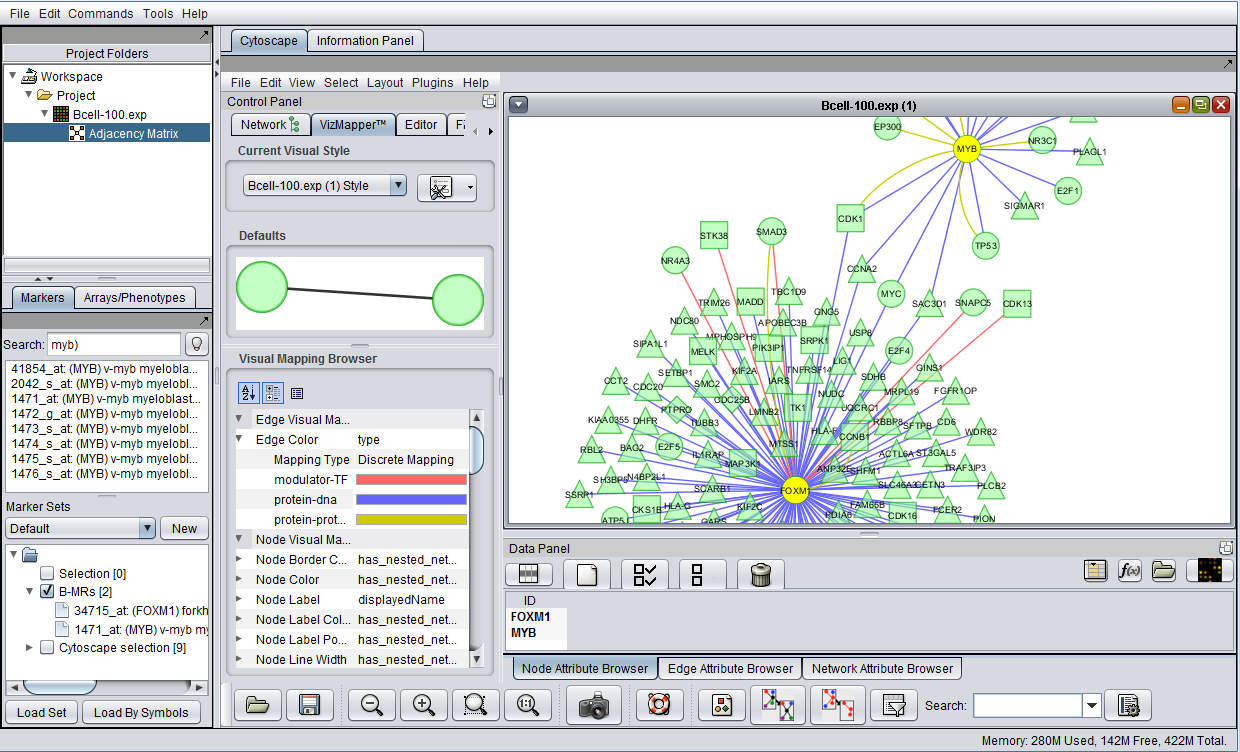Difference between revisions of "Home"
(→Brief Overview of Changes in geWorkbench Release 2.4.1) |
(→Brief Overview of Changes in geWorkbench Release 2.4.1) |
||
| Line 19: | Line 19: | ||
geWorkbench 2.4.1 is only intended for use with Java 6. A few known incompatibilities with Java 7 are known to exist. | geWorkbench 2.4.1 is only intended for use with Java 6. A few known incompatibilities with Java 7 are known to exist. | ||
| − | View the [[Media: | + | View the [[Media:GeWorkbench_2.4.1_ReleaseNotes.txt | geWorkbench 2.4.1 Release Notes]]. |
==Brief Overview of Major Changes in geWorkbench Release 2.4.0== | ==Brief Overview of Major Changes in geWorkbench Release 2.4.0== | ||
Revision as of 13:44, 26 October 2012
Contents
Quick Start
Please see the Quick Start guide to geWorkbench to see how to get started using geWorkbench right away.
Current Release
Welcome to geWorkbench. The current version is 2.4.1, released October 26th, 2012.
geWorkbench can be downloaded from the NCI GForge site at https://gforge.nci.nih.gov/frs/?group_id=78. Installation instructions can be found on the Download and Installation page of this Wiki. The Release Notes are also available on GForge.
Brief Overview of Changes in geWorkbench Release 2.4.1
Release Date: October 26th, 2012
Version 2.4.1 is a bug fix release to deal with a few specific issues:
- BLAST - Due to changes in the HTML output format of BLAST result pages from NCBI, results from an NCBI BLAST search could no longer be parsed into geWorkbench. geWorkbench will now rely primarily on NCBI's XML result format, which should remain more stable.
- ANOVA - A problem with activated marker sets has been corrected. Incorrect markers may have been used.
- Installation - The installer will now install geWorkbench to the user's home directory on all platforms.
geWorkbench 2.4.1 is only intended for use with Java 6. A few known incompatibilities with Java 7 are known to exist.
View the geWorkbench 2.4.1 Release Notes.
Brief Overview of Major Changes in geWorkbench Release 2.4.0
Release Date: July 23, 2012
- Significance Analysis of Microarrays (SAM) - An interface to an R implementation of SAM has been added. The user can choose an instance of R running on his or her own desktop, or access a remote grid service version with proper authorization.
- Master Regulator Analysis - Major updates have been made to the MRA component.
- The FET-based method now has the option of performing two FET runs on orthogonal slices of the data to determine the regulatory mode of the candidate master regulators.
- The graphical result display has been completely updated. It now can display multiple bar graphs for multiple master regulator candidates, and uses a rank based ordering of the bars rather than the t-statistic value.
- SkyBase - Adds access to the much larger PDB-60 database of homology model structures. As of 7/19/2012, the databases have:
- PDB60: 12,264 structures, 7,804,258 models.
- NESG: 946 structures, 1,943,390 models.
- Affymetrix Human Gene 1.0 ST whole-transcript and Human Exon 1.0 ST annotation files - support has been added for these Affymtrix annotation files.
- caArray - The interface to caArray can now query the newly released caArray version 2.5. However, it is not backward compatible with caArray 2.4 or earlier.
- t-test - The t-test is now calculated using the Apache Commons Math Library. P-values may show slight changes due to improved precision.
Some, but not all, known incompatibilities with Java 7 have been corrected. geWorkbench 2.4.0 is only intended for use with Java 6.
View the geWorkbench 2.4.0 Release Notes.
Overview
geWorkbench (genomics Workbench) is a Java-based open-source platform for integrated genomics. Using a component architecture it allows individually developed plug-ins to be configured into complex bioinformatic applications. At present there are more than 70 available plug-ins supporting the visualization and analysis of gene expression and sequence data. Example use cases include:
- loading data from local or remote data sources.
- visualizing gene expression, molecular interaction networks, protein sequence and protein structure data in a variety of ways.
- providing access to client- and server-side computational analysis tools such as t-test analysis, hierarchical clustering, self organizing maps, regulatory neworks reconstruction, BLAST searches, pattern/motif discovery, etc.
- validating computational hypothesis through the integration of gene and pathway annotation information from curated sources as well as through Gene Ontology enrichment analysis.
geWorkbench is the Bioinformatics platform of MAGNet, the National Center for the Multi-scale Analysis of Genomic and Cellular Networks (one of the 7 National Centers for Biomedial Computing funded through the NIH Roadmap). Additionally, geWorkbench is supported by caBIG®, NCI's cancer Biomedical Informatics Grid initiative.
End-user and developer support for geWorkbench is provided through the caBIG® Molecular Analysis Tools Knowledge Center, a component of the caBIG® Enterprise Support Network.
Graphical User Interface
The figure above shows the full geWorkbench graphical user interface. The Cellular Network Knowledge Base B-cell interactome was queried for interactions of two master regulator genes, and the result displayed in Cytoscape.
Previous Releases
See the Previous Releases page for full details.

